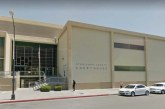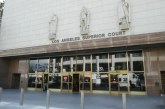 One of our chief complaints about the operation of governments is that confidentiality laws that are supposed to protect minors from undue intrusions and public exposure are transformed into shields for public agencies to protect them from scrutiny regarding misconduct.
One of our chief complaints about the operation of governments is that confidentiality laws that are supposed to protect minors from undue intrusions and public exposure are transformed into shields for public agencies to protect them from scrutiny regarding misconduct.
Acting on that rationale, the Los Angeles Times reports, “Los Angeles County Juvenile Court will be opened to media coverage regularly, with certain exceptions intended to protect the interests of children, under an order issued Tuesday by the court’s presiding judge.”
The Times reported that Judge Michael Nash said he “wanted to open the proceedings because secrecy had allowed problems to fester outside of the public’s view.” The report adds, “Without access to the courts, news organizations have been forced to rely on incomplete case records released months or years after decisions were made.”
In this case, the ruling applies only to the dependency side of Juvenile Court dealing with issues of child abuse, foster care and adoption proceeding and it would not apply to the criminal portion of the court.
The Times reports, “Under state law, Juvenile Court judges have always been able to open a proceeding if a news organization makes a persuasive argument for it. But the media virtually never prevail.”
“Nash’s order shifts the burden of proof from news organizations to the parties involved in the proceedings. A Juvenile Court proceeding will now be open to reporters unless a compelling case is made to close it in the best interest of the child or children involved,” the Times reports.
“The burden of proof does not shift for members of the public, however. For them, proceedings will be closed if an objection is raised – unless they demonstrate a legitimate interest in attending or are present at the request of the child or the child’s attorney,” they continue.
Kelli Sager, an attorney for the Los Angeles Times, told Judge Nash that his order would provide a road map for judges. “For 20 years there has been no process set up … and the process has been inconsistent or ad hoc at best,” Ms. Sager said.
However, the director of the Children’s Law Center of California, “which represents a majority of children in the Los Angeles dependency system, said her firm was considering an appeal to the order.”
The Times reports, “Before the order was made final, she said her concerns had been largely resolved by revisions made by Nash in recent weeks. But after further reflection, she issued a statement Tuesday that said “there has been no opportunity to address necessary protocols and procedures aimed at ensuring that the child’s protection does not take a back seat to public and media access.””
The Times also noted that a commission led by then-California Supreme Court Justice Carlos Moreno “found that hearings on critical placement decisions for abused children commonly lasted 10 to 15 minutes, less than half the recommended duration.”
“California’s dependency courts are over-stressed and under-resourced, burdened by crowded dockets and inadequate information,” the commission wrote.
Yolo Judicial Watch believes that shining the light on criminal proceedings has helped draw scrutiny to the local judicial system. While the LA County ruling opens much-needed scrutiny on matters of child dependency – particularly abuse within the foster system, we believe there is a similar abuse in juvenile delinquency cases that bears scrutiny, as well.
We know how the system operates in adult court where proceedings are open to the public, but is rarely observed by the public, and only in high profile cases that are somewhat arbitrarily selected and overly sensational does the media cover the courts.
However, in these matters, at least there is the opportunity for scrutiny. We have heard stories about juvenile court that ought to raise flags – but the flags cannot be raised and the matters cannot be scrutinized without open hearings.
Like all matters, it is a double-edged sword. We saw the other end of this issue in a matter that will go to trial this week.
Deputy District Attorney Ryan Couzens was accused of improperly relying on confidential juvenile records to sustain gang charges back in September following a Penal Code section 995 hearing to dismiss charges against one of the defendants following a preliminary hearing.
Deputy Public Defender Charles Butler accused Deputy DA Ryan Couzens of intentionally airing confidential juvenile records in a callous disregard for the rights of his client.
Jose Duran is one of three defendants in the case, facing serious prison time on fifteen criminal counts, including conspiracy to commit a felony, attempted carjacking, robbery, battery, dissuading a witness and criminal street gang activity with enhancements for great bodily injury and gang activity.
A preliminary hearing would hold the defendants, Mr. Duran along with Salvador Vazquez and Joseph Sisneros, to the counts in this case.
At issue at this time was the motion, brought forth by Mr. Butler, to set aside two of the counts along with the gang enhancements.
During the preliminary hearing, Detective John Sample testified as a gang expert. Writes Mr. Butler, “Over the objection of defense counsel, Detective Sample testified about a police investigation for a crime involving Mr. Duran that occurred on March 19, 2006, when Mr. Duran was fourteen years old.”
He continued, “Detective Sample did not participate in the 2006 investigation, but reviewed police reports about the case in the Versadex department reporting system.”
“Over renewed objection, Detective Sample testified about the information contained in the police report, including the weapons involved, the presence of ‘several other codefendants who were Norteño gang members,’ the location of the crime, the details of the crime, some ‘graffiti at the residence,’ the color of Mr. Duran’s clothing, Mr. Duran’s statements during the investigation, and the ultimate disposition of the case.”
The key dispute is whether the gang expert relied upon inadmissible testimony, which relied almost exclusively on confidential juvenile records, as the basis of the opinion that Mr. Duran is a gang member.
Mr. Butler argued, “Welfare and Institutions Code section 827 states that a juvenile case file may be inspected only by a specific list of individuals. The list includes police officers, but it does not include the general public; the preliminary hearing was conducted in open court and the officer testified regarding the content of the police reports from Mr. Duran’s juvenile case file.”
Mr. Couzens argued that Detective Sample was not going into confidential files, but rather he reported on what he knows, which is allowable.
In his opposition, Mr. Couzens argued, “Section 827 is a simple rule of 20 discovery that prevents review of certain material in a juvenile file by outside persons.”
Instead he argues, “Case law actually says that 827 does not preclude testimony regarding juvenile matters.”
Mr. Butler responded that Mr. Couzens has repeatedly violated Welfare and Institutions Code (WIC) Section 827.1, a juvenile’s right to confidentiality and that the “most appalling part” is that “he just doesn’t care.” He continued, that you “cannot get in the back door, what you can’t get in the front door.”
Judge Mock, listening to this interchange, said that trying to fit juvenile records and rules into a public court is an impossible task.
Opening such matters to the public, would of course make material available for prosecutors. On the other hand, it would also allow for greater scrutiny of those records.
It is clearly a double-edged sword – the value of public scrutiny versus the downside of scrutinizing the acts of minors that were previously protected from such public light.
There are undoubtedly ways to both gain better transparency of the juvenile system while still protecting minors from the full light of public scrutiny.
—David M. Greenwald reporting





[quote]There are undoubtedly ways to both gain better transparency of the juvenile system while still protecting minors from the full light of public scrutiny.[/quote]
And how would you suggest that be done?
“And how would you suggest that be done?”
Opening the system to media but withhold the name of minors might be a good start.
[quote]Opening the system to media but withhold the name of minors might be a good start.[/quote]
But once the names are revealed to media; or media is allowed camera access, isn’t the damage done? There is the possibility the minor’s name will be revealed? We have already seen this presently, at a time when it is against the law to reveal the name of a minor. Every once in a while it happens though… How do you propose to get around that problem?
You let in the media under the condition that they protect the identity of the minor – many already practice this anyway. Just like the media usually do not reveal the name of a rape victim. This isn’t that difficult.
[quote]You let in the media under the condition that they protect the identity of the minor – many already practice this anyway. Just like the media usually do not reveal the name of a rape victim. This isn’t that difficult.[/quote]
But even now the system isn’t fool proof. Imagine how worse things will be when you allow media unfettered access…
“But even now the system isn’t fool proof. Imagine how worse things will be when you allow media unfettered access…”
Ah but the access would not be unfettered. That’s precisely the point that I was making and that the Judge made as well.